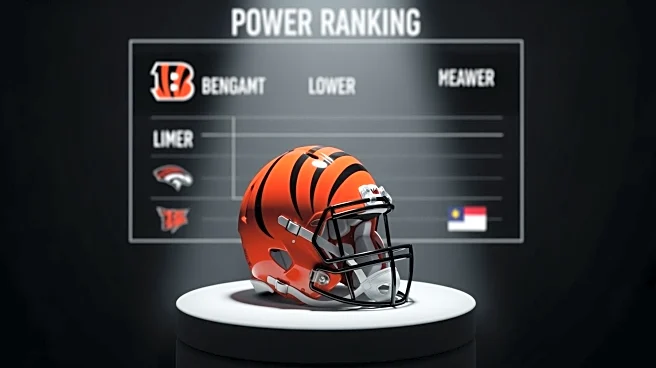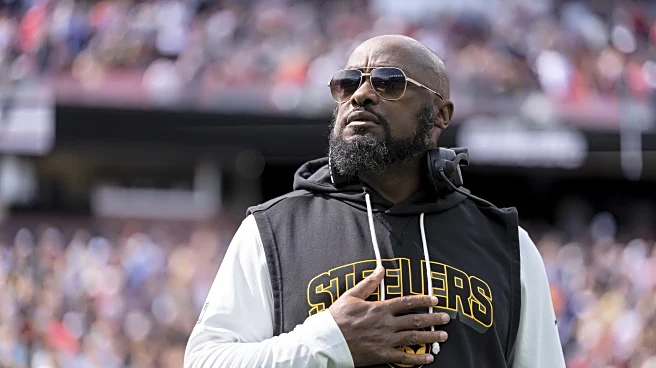What's Happening?
Calvin Austin III, the Pittsburgh Steelers' No. 2 wide receiver, is set to miss his second consecutive game due to a shoulder injury sustained in Ireland. Austin did not participate in practice leading
up to the Week 7 game against the Cincinnati Bengals and has been officially ruled out. Despite initial reports suggesting he might miss several games, recent updates indicate that Austin's injury is less severe than initially thought, with expectations for his return in Week 8 against the Green Bay Packers. Austin ranks third in receiving yards for the Steelers, highlighting the team's current challenges in the wide receiver position.
Why It's Important?
Austin's absence is significant for the Steelers, who are already facing a shortage in their wide receiver lineup. His return is crucial for the team's offensive strategy, as Austin is a key player behind DK Metcalf and running back Jaylen Warren in receiving yards. The Steelers are reportedly exploring trade options to bolster their lineup, indicating the importance of maintaining a strong receiving corps. Austin's return could stabilize the team's performance, but the Steelers may still pursue additional support to ensure competitiveness in upcoming games.
What's Next?
The Steelers are expected to have Austin back for the Week 8 game against the Green Bay Packers. In the meantime, the team is relying on players like Ben Skowronek, Scotty Miller, and Roman Wilson to step up and support Metcalf. The Steelers are also considering trade options to strengthen their roster before the trade deadline, as reported by Bleacher Report and ESPN. These moves could impact the team's strategy and performance in the coming weeks.
Beyond the Headlines
Austin's injury and the Steelers' response highlight the challenges teams face in maintaining a competitive lineup amid injuries. The team's exploration of trade options underscores the dynamic nature of NFL team management and the importance of adaptability in response to player availability. This situation also reflects broader trends in sports management, where teams must balance immediate needs with long-term strategic planning.












